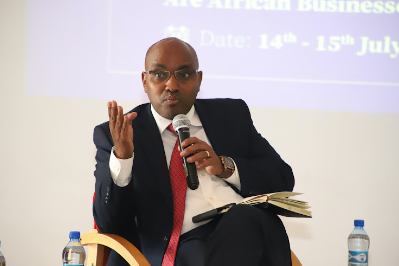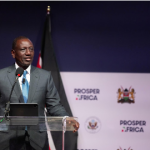KCB Group has reclaimed its position as East Africa’s most profitable bank, reporting a 69% growth in net earnings for the first quarter of the year.
The lender’s Q1 results, released on Wednesday, show net profits nearly doubling to Sh16.5 billion from Sh9.8 billion during the same period in 2022.
KCB Group Managing Director and CEO Paul Russo described the performance as historic, attributing it to revenue growth across the bank’s entire network, which boosted the balance sheet to Sh2 trillion from Sh1.6 trillion a year earlier. Total revenues rose by 31.6% to Sh48.5 billion, driven by both funded and non-funded income streams.
Non-funded income accounted for 36% of total revenues, supported by increased transaction volumes from customer confidence and the adoption of digital banking and alternative channels, making banking more accessible.
“Despite a difficult operating environment across the region, we saw a strong revenue performance in the business as we entrenched prudent credit, liquidity, cost, and overall risk management. Consumer deposits continued to grow, a show of confidence that our clients have in the brand.”
“Our deliberate investments in digital and payments capabilities as well as the regional expansion approach continued to deliver impressive results,” Russo said.
He added that the lender would continue to leverage its capabilities through syndication of facilities and tapping on centres of excellence to drive operational efficiency.
“Under our shared services model, we prioritised automation of key processes, rolled out more products on our self-serve channels and review of loan application processes continued to drive customer obsession and reduce friction.”
KCB Group posted a significant rise in key financial metrics for the first quarter. Customer deposits increased by 25.4% to Sh1.5 trillion, primarily from the Kenyan market. Customer loans saw a 12.2% rise to Sh1.13 trillion, driven by additional lending to support business activities.
The group’s diversification strategy is yielding results, with businesses outside KCB Bank Kenya contributing 17.9% of pre-tax profits and 13.1% of total assets. Operational efficiency improved, as the cost-to-income ratio dropped to 43.3% from 51.2%, attributed to strong income growth and strict cost management.
Despite this, total costs rose by 11.3% to Sh21 billion, mainly due to inflationary pressures affecting East Africa and globally.
Loan impairments surged by 53.4% due to downgraded facilities, leading to a gross non-performing loan (NPL) book of Sh205.3 billion and an NPL ratio of 18.2%. This increase was attributed to downgrades in Kenya and the impact of foreign currency translations.
The group is prioritizing efforts to improve asset quality through various measures aimed at reducing NPL ratios in the short and long term.
Shareholders’ funds grew by 11% to Sh238.6 billion, up from Sh214.8 billion in the previous year. This increase reflects the value gap between the group’s book and market valuations, offering an attractive entry point for new shareholders and growth opportunities for existing ones. Return on equity improved from 19.7% to 28.6%.
The lender remains optimistic about business prospects for the rest of the year, compared to last year.
“We have made tangible progress to sustain superior shareholder value by delivering strong financial performance while driving our agenda to build a future-proof business. Prudent deployment of our capital has ensured that we were able to remain resilient and deliver for our stakeholders,” said KCB Group Chairman Joseph Kinyua.
The Group maintained a strong capital profile with a core capital to risk-weighted assets ratio of 15.7 per cent, exceeding the statutory minimum of 10.5per cent.
The total capital to risk-weighted assets ratio was 17.8per cent, above the regulatory minimum of 14.5per cent.
All banking subsidiaries complied with local regulatory capital requirements, except for NBK.



